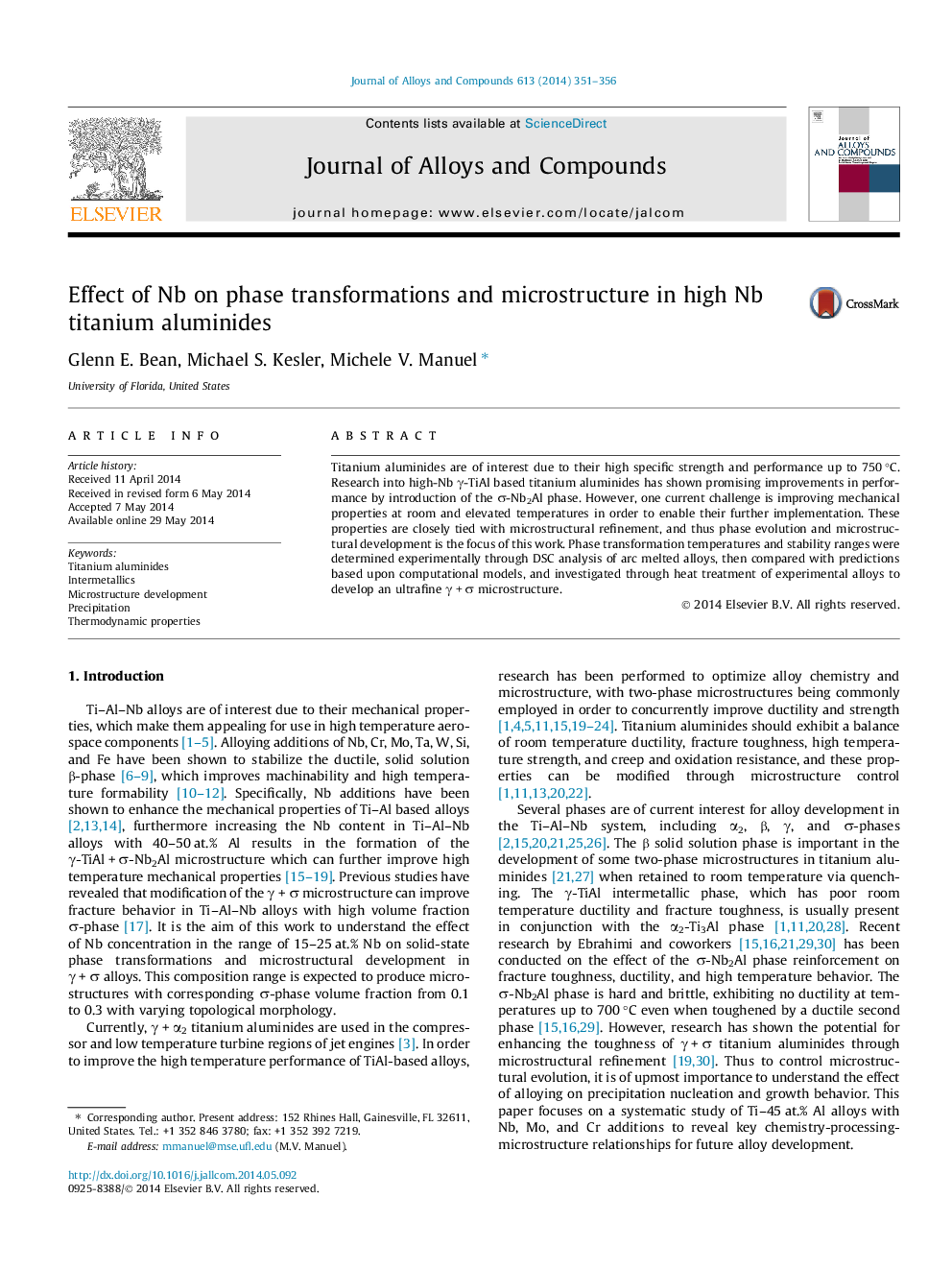| Article ID | Journal | Published Year | Pages | File Type |
|---|---|---|---|---|
| 1610676 | Journal of Alloys and Compounds | 2014 | 6 Pages |
•Thermodynamically-guided design of heat treatment schedules.•Linking chemistry and heat treatment to phase morphology.•Strong dependence of phase transformation behavior on Nb concentration.
Titanium aluminides are of interest due to their high specific strength and performance up to 750 °C. Research into high-Nb γ-TiAl based titanium aluminides has shown promising improvements in performance by introduction of the σ-Nb2Al phase. However, one current challenge is improving mechanical properties at room and elevated temperatures in order to enable their further implementation. These properties are closely tied with microstructural refinement, and thus phase evolution and microstructural development is the focus of this work. Phase transformation temperatures and stability ranges were determined experimentally through DSC analysis of arc melted alloys, then compared with predictions based upon computational models, and investigated through heat treatment of experimental alloys to develop an ultrafine γ + σ microstructure.
